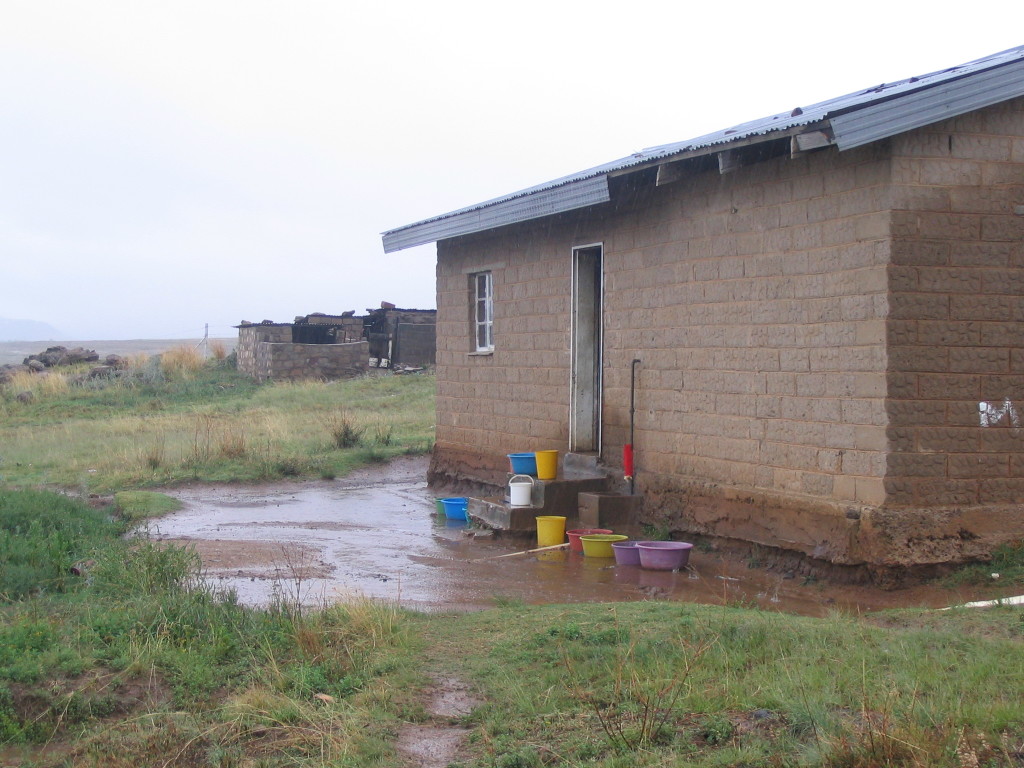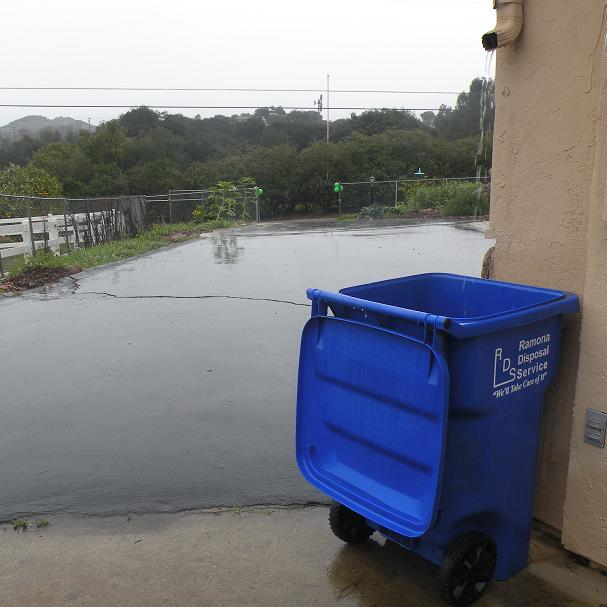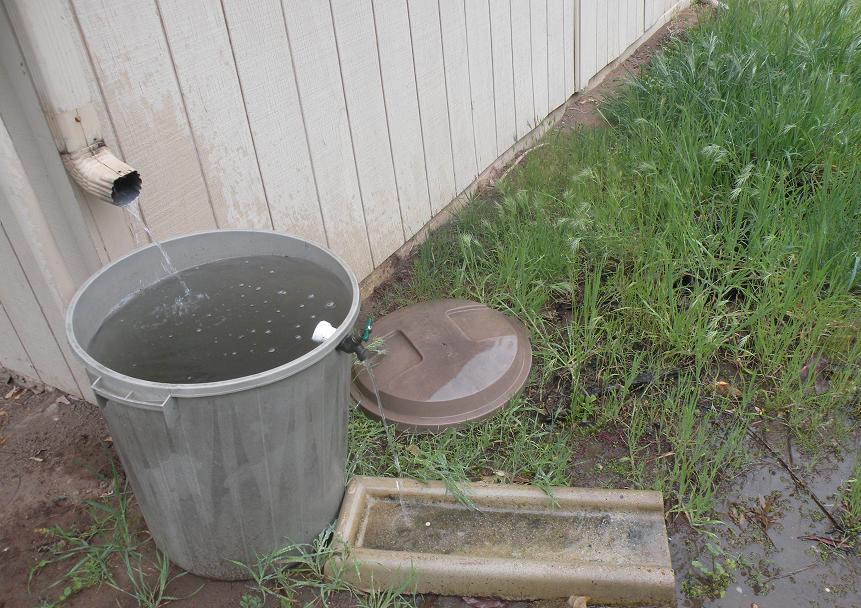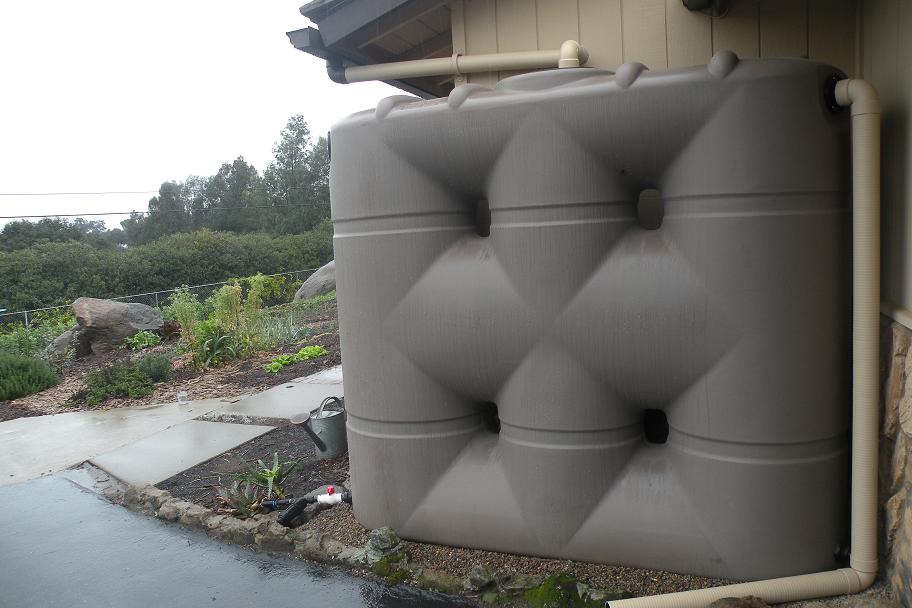I started caring about rain while I was living in Ts’oeneng, where everyone farmed without irrigation as well as got their drinking water from springs and wells. Rain provided food and drink in a very direct way.
I also started collecting rain from roofs while living in Ts’oeneng, at Ngoana Jesu Secondary School.
This is the view I had from my window during a rain. This is the hostel, where students lived on the school grounds. The hostel didn’t have gutters connected to its roof just as my house didn’t. So when it rained the hostelers placed their water buckets and wash basins under the best drips coming off the edge and collected as much as they could. This saved trips up to the pump, and the rainwater tasted good. It was also softer (less minerals) than the water pumped from underground and so felt good to use for bathing. That’s what the hostelers said anyway — I never noticed the difference.
When I moved back to California I had the advantage of gutters and downspouts to direct and concentrate the flow of rain off the roof. At our new house I first did the straightforward thing and raised the downspout and then placed the biggest container around, the recycle bin, under it.
Next I fiddled with another downspout and inserted a faucet head into a trashcan to act as an overflow route.
Both methods work, but both the recycle bin and the trashcan have as their main disadvantage that they only hold 30-50 gallons. That’s nothing compared to the amount the roof sheds. For every 1,000 square feet of roof a rain of one inch will shed around 600 gallons. So I decided to go bigger on the holding capacity.
This winter we made use of this dedicated rain tank. It holds 530 gallons. It collects off a 383 square feet section of roof and so will hold nearly four inches’ worth of rain. Beyond the holding capacity, it offers a much better way of distributing the collected rainwater. The valve (red and white) at the bottom of the tank is connected to the drip irrigation lines that snake through vegetable beds, and because these vegetable beds are all lower in elevation than the tank, the water easily flows through the system powered only by gravity.
The simplicity of the tank-and-drip-line design delights me as much as its effectiveness. We’ve come a long way from the buckets and wash basins under the eaves.
You might also like to read:







Hello Greg, when collecting rain water, do you get concerned at all about contaminants coming from your roof tiles?
Hi Greg, so starting to panic a bit due to the new water restrictions coming to SoCal ?
How much water do 3-5 year old fruit trees need? I wanted to buy a larger tank then the one above but after almost ordering it I realized I could not get it into the backyard without a crane. So it’s either one or two of the slim lines above. I have about 20 trees many about 5 years old.